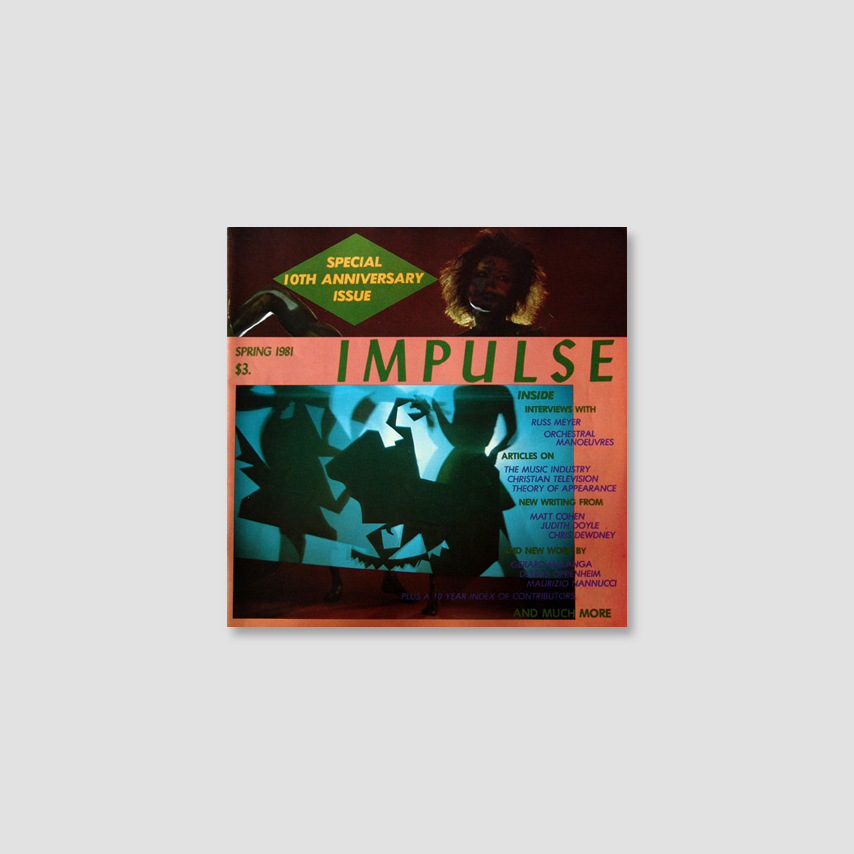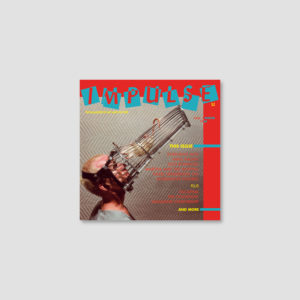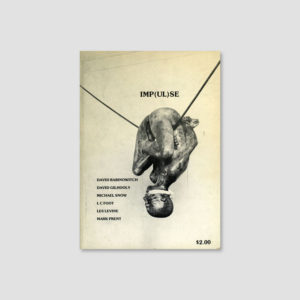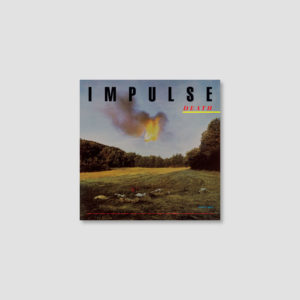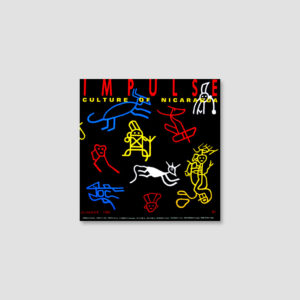Publisher:
Eldon Garnet.
Editors:
Eldon Garnet, Shelagh Alexander and Judith Doyle.
Contributing Editors:
New York:
Lisa Baumgarder.
Design:
Shelagh Alexander.
Design Assistance:
Ken Baird.
Advertising:
Tony Hardingham.
Distribution:
Karl Jirgens.
Typography:
Alphabets.
Table of Contents:
Andrew James Paterson, ‘Industrial Overload’; Anne Milne, ‘Considering Christian Television’; Dawn Eagle, ‘Theory Of Appearance’; Chris Dewdney, ‘Case A-7’; Matt Cohen, ‘In Search of Inspiration’; Donna Lypchuk, ‘Rebel Without A Car’; Judith Doyle, ‘Fading’; Steven Davey, ‘Fads Fade Orchestral Manoeuvres’; Krzysztof Wodiczko, ‘Proposed Projection’; Tom Dean, ‘Ramps’; Vincent Tangredi, ‘The Campanile’; Brian Boigon, ‘A Mirror In The Window’; Lorne Fromer, ‘Russ Myer’; Kaz, ‘Untitled’; Barbara Astman, ‘Untitled’; David Buchan, ‘Out Of This World!’; Denis Bouchard, ‘Hair Wear’; Maurizio Nannucci, ‘All That Happens Goes’; Dennis Oppenheim, ‘Thought Projectile Factories’; Gerard Malanga, ‘Shark Bait’.
Editorial:
Q: Can you describe the beginnings of the magazine?
A: Impulse was founded in February 1971 by Peter Such – a literary magazine publishing new work as opposed to reviews and commentary. It was small, historically important, an outlet for new and established writers.
Q: Who were you then?
A: I was a young writer, a contributor to the first issue of Impulse. In 1973, I became associate editor – a collaboration between my magazine Porcepic and Impulse. I resigned shortly thereafter when Impulse completely absorbed Porcepic – it appeared merely to be an issue of Impulse.
Q: How did you eventually become the editor?
A: In 1974, Impulse published a double issue of a book I’d edited, W)Here? The Other Canadian Poetry. At this point, I literally had become the editor, so Peter Such gave me the magazine.
Q: After this issue the magazine appears to have changed drastically.
A: The next issue was a monograph of photographs by Fletcher Starbuck. The literary readership hated it. I woke one morning to a radio interviewer’s phone call; I told him to phone back after I’d had a cup of coffee. I spent the morning listening to Impulse being attacked on the radio.
Q: Some of your issues aren’t even recognizable as magazines.
A: From 1975 to 1978, Impulse was a magazine of changing formats, an artists magazine, publishing new works produced for magazine format. In 1976 a long-playing record was released as an issue. In 1978 the magazine was a super-8 movie, Einstein’s Joke, and a “cinefiche” of the movie. Although conceptually one of the stronger issues, the microfiche succeeded in destroying the remainder of our market. I still don’t know five people with microfiche viewers. With each issue, I would try to change, to surprise, to destroy everyone’s expectations. After four years of re-defining what could be called a magazine, I felt the most radical change I could undertake would be to standardize the format.
Q: Is that when the square format appeared?
A: Yes, with the help of M.A. Hanet, Impulse became square and glossy, employing the grid as a motif of organization. The design was simple and flat. Our basic editorial aim remained the same, a commitment to publishing new works by artists and writers. Throughout the past four issues, Shelagh Alexander’s design sensibility is pre-eminent; now as a designer and an editor she is involved in every aspect of the magazine. Judith Doyle, an editor for the past three issues, has worked to develop our text. I am now publisher, general overseer and frequent contributor.
Q: Has the magazine changed much lately?
A: Our concerns are consistent; Impulse changes with the changing interests of its contributors. If we didn’t change there wouldn’t be any sense in continuing to publish the magazine.
Q: Happy birthday.
A: After ten years, thanks.
Eldon Garnet
